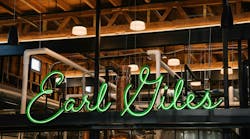NEW YORK — Multiple compliance options to ensure verification of delivered building envelope performance are being proposed for ANSI/ASHRAE/IES Standard 90.1-2013, Energy Standard for Buildings Except Low-Rise Residential Buildings.
“Uncontrolled air leakage has long been an unquantified variable in load calculations for buildings large and small,” said Chris Mathis, a member of the 90.1 Committee who helped to develop the proposal. “It has also been identified as the ‘weak link’ in many otherwise well insulated building enclosures. These newly proposed envelope testing, inspection and verification procedures are intended to not only help deliver better performing building envelopes, but also should help reduce errors associated with envelope air leakage in equipment sizing calculations.” Addendum l is one of 14 proposed addenda to 90.1-2013, currently open for public comment. To learn more or to comment, visit www.ashrae.org/publicreviews. “The addendum addresses several items of timely and critical importance to users,” Mathis said. “First, it seeks to clarify several inspection and performance verification items that have long been requirements of the standard, with the goal of improving delivered performance and code compliance. Secondly, the proposed addendum includes new language addressing important building envelope inspection and verification requirements, especially as they relate to controlling air leakage. The proposal provides for multiple compliance methods including whole building air leakage testing and continuous air barrier inspection and performance verification procedures.” Mathis notes that the proposed changes would likely have an impact on construction first costs. “Data provided to the Committee showed that the savings of these various approaches to envelope performance verification more than justify the potential increases in first cost,” he said. “Additionally, the costs of the verification procedures will go down over time as builders become more familiar with envelope performance testing, inspection and other verification techniques and their construction practices improve due to the important feedback they will provide.” Building enclosure professionals are encouraged to carefully review the proposed changes and to offer their comments to assist ASHRAE in strengthening these important code compliance provisions, Mathis noted. Other addenda open for public review from Sept. 5 until Oct. 5, 2014 are: • e relaxes the existing threshold for lighting control alterations while capturing a lot of energy efficiency by requiring more of the control requirements • f clarifies an exception to the automatic daylight responsive controls requirements for daylight areas under skylights • j removes an exception to the variable air volume system ventilation optimization when energy recovery ventilation is installed • k requires envelope assemblies to comply with Appendix A when complying with the Energy Cost Budget Method in Appendix G • m updates the text in Section 10.4.1 on electric motors to provide information about the required efficiency of small electric motors shown in Tables 10.8-4 and 10.8-5. In addition, small electric motors were not included in the scope of the Energy Independence ad Security Act of 2007, but now have performance requirements and are being added to the standard • n updates the IEER values for air-cooled variable refrigerant flow air conditioners and heat pumps above 65,000 Btu/h. Depending on the cooling capacity and product classes, the new IEERs are between 15 and 20% better than the values they are replacing. The new IEERs become effective on Jan. 1, 2017 • o clarifies wording regarding duct seal class to avoid misinterpretation that compliance with the text that is struck out could substitute for the seal class requirement • p updates Cooling Technology Institute Standard 201 in Table 6.8.1-7 • q limits systems that can take advantage of the fan power pressure allowance for fully ducted return and/or exhaust air systems • r revises Section G3.1.1 Baseline HVAC System Type and Description to confirm the hierarchy for selecting baseline HVAC systems, clarify what floors to count and specify what building type to use when no one use is predominant • s adds Exception 2 to 6.5.2.1 to address single duct variable air volume reheat systems with direct digital control • u adds new requirements for transfer air in exhaust systems. Also open for public comment from Sept. 5 to Oct. 20, 2014 is addendum bm, which makes the requirements from 90.1-2004 the baseline for modeling when using Appendix G. In addition, it allows Appendix G to be used as a compliance path. About the Illuminating Engineering Society of North America IES is the oldest and largest educational and scientific society in North America devoted to lighting. Since 1906, the IES has sought to improve the lighted environment by bringing together those with lighting knowledge and by translating that knowledge into actions that benefit the public. A broad variety of programs, including publications, conferences and seminars, have been established to accomplish this mission. IES publishes and distributes the finest lighting literature authored by committees with the most experienced minds in industry and academia today.Contact:
E-mail:
Web site:
Contact:
Clayton Gordon - Illuminating Engineering Society (IES)
212-248-5000 ext. 110
E-mail:
Web site:
Submit new products, case studies/projects, and other press releases at http://www.ledsmagazine.com/content/leds/en/addcontent.html and http://www.ledsmagazine.com/content/leds/en/iif/add.html.






